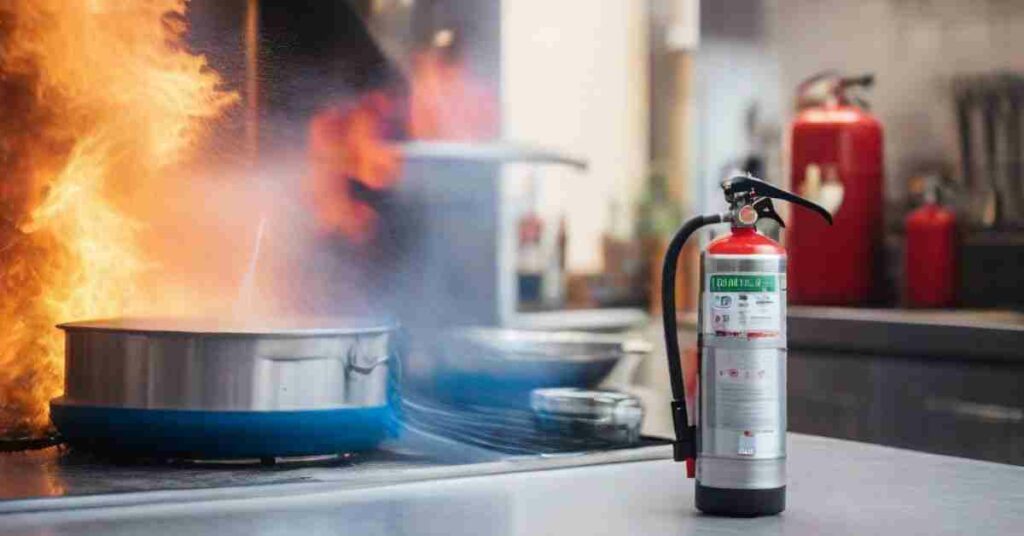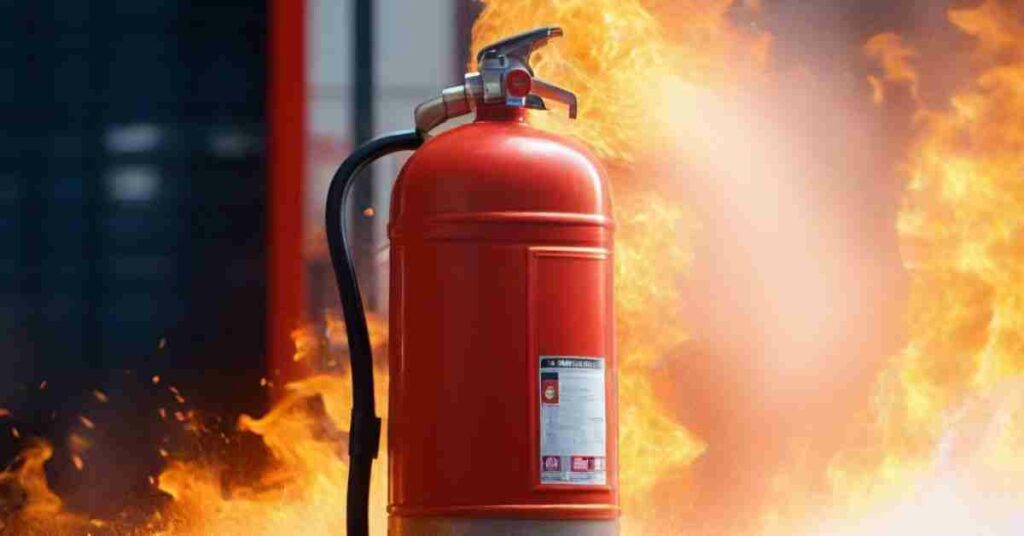Fire safety is an essential aspect of any home or workplace. A suitable fire extinguisher can make a significant difference in a fire emergency. Therefore, understand the different types of fire extinguishers and their practical applications to make an informed purchase. This guide provides an overview of different fire extinguishers and their recommended uses.
Classifications of Fire Extinguishers
Fire extinguishers are classified based on the type of fire they can effectively combat. There are five main classes of fires:
- Class A: Fires involving ordinary combustibles such as wood, paper, and cloth.
- Class B: Fires fueled by flammable liquids like gasoline, oil, and grease.
- Class C: Fires involving energized electrical equipment.
- Class D: Fires fueled by combustible metals.
- Class K: Fires in cooking appliances fueled by vegetable oils or animal fats.
Types of Fire Extinguishers

Water (Class A)
Water fire extinguishers are designed for Class A fires involving ordinary combustibles such as wood, paper, and cloth. They work by cooling and soaking the materials to extinguish the flames. While effective for Class A fires, they should not be used on flammable liquids, electrical equipment, or metal fires.
- Suitable for Class A fires.
- Not suitable for Class B, C, D, or K fires.
- Commonly denoted by a red label.
Foam (AFFF – Aqueous Film-Forming Foam)
Foam extinguishers are suitable for Class A and B fires. They work by forming a film on the surface of the fuel, preventing the release of flammable vapors. While effective on liquids like gasoline, they should not be used on electrical or metal fires.
- Effective against Class A and B fires.
- Not suitable for Class C, D, or K fires.
- Commonly denoted by a cream label.
Dry Powder (Class ABC)
Dry powder extinguishers are versatile and effective on Class A, B, and C fires. They work by separating the fuel from the oxygen, suppressing the combustion process. However, the residue can be a concern in enclosed spaces, and they are not suitable for Class D or K fires.
- It is effective against Class A, B, and C fires.
- Not suitable for Class D or K fires.
- Commonly denoted by a blue label.
Carbon Dioxide (CO2)
CO2 extinguishers are effective on Class B and C fires by displacing oxygen and cooling the fire. They leave no residue, making them suitable for use on electrical equipment. However, they are less effective on Class A fires and should not be used on Class D or K fires.
- Effective against Class B and C fires.
- Limited effectiveness for Class A fires.
- Not suitable for Class D or K fires.
- Commonly denoted by a black label.
Wet Chemical (Class K)
Wet chemical extinguishers are specifically designed for kitchen fires involving cooking oils and fats (Class K). They work by creating a barrier on the surface of the oil to prevent re-ignition. They can also be used on Class A fires but are not suitable for flammable liquids or electrical fires.
- Specifically designed for kitchen fires (cooking oils and fats).
- Can also be used on Class A fires.
- Not suitable for Class B, C, or D fires.
- Commonly denoted by an oatmeal-coloured label.
Clean Agent (Halotron, FE-36, etc.)
Clean agent extinguishers are effective on Class A, B, and C fires. They work by interrupting the combustion process without leaving a residue, making them suitable for use in areas with sensitive electronic equipment. They are not suitable for Class D or K fires.
- Suitable for Class A, B, and C fires.
- Leaves no residue, making it ideal for sensitive electronic equipment.
- Not suitable for Class D or K fires.
Class D (Metal Fire Extinguishers)
Class D extinguishers are specifically designed for fires involving combustible metals like magnesium or titanium. They work by smothering the fire and preventing the metal from reacting with oxygen. They are not suitable for common fires (Class A, B, C, or K).
Designed for fires involving combustible metals.
Not suitable for common fires (Class A, B, C, or K).
Considerations for Purchase
If you want to purchase a fire extinguisher, there are several factors to consider to ensure the specific needs of your environment and enhance overall fire safety. Here are key considerations:
Fire Classifications
Understand the types of fires likely to occur in your setting (Class A, B, C, D, or K). Choose a fire extinguisher that is appropriate for the specific fire risks present.
Location and Placement
Consider where the fire extinguisher will be placed. Different areas may require different types of extinguishers. For instance, a kitchen might need a Class K extinguisher, while an office may benefit from a multi-purpose ABC extinguisher.
Size and Weight
Make sure that the size and weight of the extinguisher are manageable for the individuals who will be using it. Larger extinguishers may provide more firefighting agents but can be more challenging to handle.
Ease of Use
Choose a fire extinguisher with a user-friendly design. Features such as easy-to-read pressure gauges, clear instructions, and simple activation mechanisms can be crucial during an emergency.
Maintenance Requirements
Consider the maintenance needs of the extinguisher. Some models may require more frequent inspections or refills. Opt for extinguishers that are easy to maintain and have clear guidelines for inspection.
Visibility and Accessibility
Ensure that the fire extinguisher is easily visible and accessible in an emergency. Proper placement and clear signage can help users locate extinguishers quickly.
Regulatory Compliance
Verify that the fire extinguisher complies with local regulations and standards. Different regions may have specific requirements regarding extinguishers’ type, size, and placement.
Training Requirements
Consider the level of training required for individuals who may need to use the extinguisher. Some extinguishers may be more straightforward for untrained personnel, while others require more specific knowledge.
Discharge Range and Duration
Evaluate the discharge range and duration of the extinguisher. This information can help determine if the extinguisher is suitable for the size of the potential fire and if it provides sufficient firefighting agent.
Cost
Compare prices of different fire extinguisher models, considering both initial costs and long-term maintenance expenses. Balance cost considerations with the extinguisher’s features and capabilities.
Manufacturer Reputation
Choose extinguishers from reputable manufacturers with a history of producing reliable and effective fire safety equipment. Check for certifications and customer reviews.
Warranty
Look for extinguishers that come with a warranty. This can provide peace of mind and assurance of the product’s quality.
By carefully considering these factors, you can select a fire extinguisher that aligns with the specific requirements of your environment, enhancing overall fire safety preparedness.
Related Article: Best Fire Extinguisher



